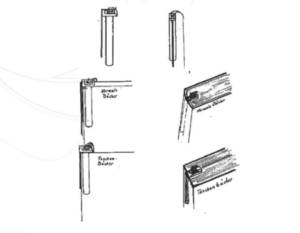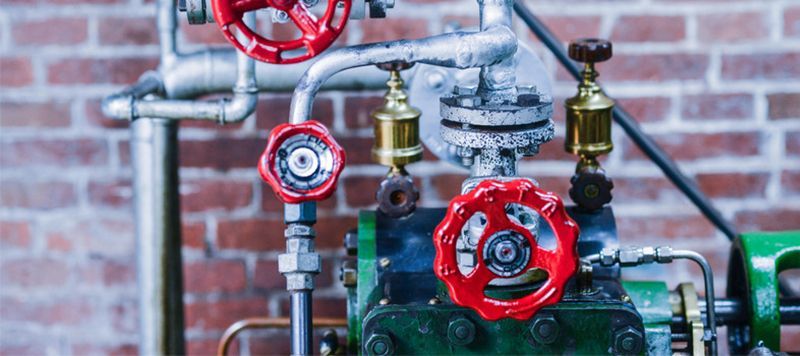By Mr Mailos Nhokwara, Formality Examiner, ARIPO
What is a utility model?
Closely related to patents and in some cases referred to as ‘petty patents,’ utility models protect new technical innovations by granting innovators limited exclusive rights to exclude third parties from commercially exploiting their protected innovations. Although there is no comprehensive and global definition of a utility model, this form of intellectual property protection, in general, is considered particularly suited for protecting innovations that make small improvements to existing products or inventions that have a shorter commercial life. Utility models are usually protected for a limited period of between 10 to 15 years, depending on the jurisdiction. For the countries that are party to ARIPO’s Harare Protocol, the term of protection is 10 years. Innovation, utility model protection and its strategic use by governments have been regarded as an important component of the modernization of countries like China, especially through SMEs.

Utility model and Patent protection
Like patents, utility models protect new technical inventions by granting a limited exclusive right to prevent others from commercially exploiting the protected inventions without the right holders’ consent. Utility models, first introduced in Germany in 1891, have been implemented in many developed and developing countries and are essentially suited to protect ‘minor’ or incremental innovations and can be acquired more easily and at a lower cost than patents. An application must be filed to obtain protection, and a utility model will be registered upon satisfying the local protection requirements. It must be noted that there is no globally accepted definition of the term of utility model due to there being fundamentally different concepts from one country to another. If one examines national laws, one finds that utility model protection is referred to in Australia as “innovation patent,” in Malaysia as “utility innovation,” in France as “utility certificate,” and in Belgium as “short term patent.” Some systems define utility models as intangible subject matter such as technical concepts or inventions or devices, while others anchor their definitions to three-dimensional forms. The World Intellectual Property Organization (WIPO) defines utility models like patents but issued for a shorter duration and granted without substantive examination. Thus, “utility model” is a generic term that refers to subject matter that hinges precariously between what is protectable under patent law and sui generis design law. It is not an accepted or clearly defined legal concept within the intellectual property paradigm.
Utility model protection in ARIPO
The Harare Protocol governs utility model protection in ARIPO and its member states. In accordance with Section 3ter (2) of this Protocol, “a utility model shall be protected under the Protocol if it is new and industrially applicable. In addition, registration of a utility model through the ARIPO Office shall in each designated State be subject to provisions of the applicable national laws.” The first ARIPO utility model was filed on 19 February 2001 by a Kenyan SME and was eventually granted on 06 June 2002 (ARIPO, 2020). Since then, the number of applications and grants has been slowly improving for the past nineteen years. The table below shows the total number of ARIPO utility models as of 30 November 2020. In the ARIPO jurisdiction, Zimbabwe is leading in the number of utility models applications originating from that jurisdiction, most of which are from SMEs, followed by Kenya and South Africa.
Table 1: Total Number of ARIPO utility model applications
| ORIGIN | TOTAL APPLICATIONS |
| International | 24 |
| Africa/Regional | 37 |
| Local/Zimbabwe | 122 |
| Total | 183 |
Source: ARIPO, 2020
Utility model utilization?
Although utility model protection comes with numerous advantages worth considering, especially for SMEs, this value is not experienced by many manufacturing SMEs in Zimbabwe, most of which are unaware of the subject matter itself. Innovations of a lower threshold for inventiveness are the driving force behind SMEs; however, most of these are not documented and protected, as shown by the country’s insignificant utility model filing activity. Utility model protection may encourage local innovation so that local industries produce more goods. However, this is not the case with manufacturing SMEs. More needs to be done for this reality to be experienced.
In most jurisdictions, utility models are generally granted without substantive examination and the registration process is simple and relatively quick in most cases. This is, however not the case in some states which currently do not have utility model law. As such, the registration of utility models can only be obtained through ARIPO. This situation raises another key issue that has a significant bearing on utilizing utility model protection by local SMEs – enforcement. Without national utility model law, it will be difficult, if not impossible, for these manufacturing SMEs to enforce their rights.
Majority of SMEs are entirely unaware of intellectual property in general and, more particularly, utility models. As such, the utilization of utility models as a form of intellectual property protection is almost insignificant. The main reason is being the complete lack of awareness of the subject matter. Innovation plays a significant role in the technological progress and economic development of countries and economies. The majority of the lower-middle-income countries, including Zimbabwe, have national patent systems to regulate the protection of various innovations. According to the research findings by Nhokwara (2021), before a proper utility model law is put in place, more needs to be done in terms of general intellectual property awareness and establishing a culture of protecting and registering inventions.
Recommendation for utility model utilization
- Governments should encourage and support manufacturing SMEs to invest in research and development and the creation of intellectual property.
- Governments need to prioritize the protection of innovation. The integral approach is a deliberate one where the government incentivizes creativity and avails grants for SMEs to protect their innovations.
- Governments need to prioritize the enactment of the utility model law as a matter of urgency. Issues of theft of intellectual property raised by some respondents will be easier to handle and enforce with appropriate laws in place.
- Increasing R&D funding to at least 1% of the GDP with a major focus on SMEs is a key driver to the economy.
- Nation-wide intellectual property awareness campaigns and capacity building programs especially for SMEs in the manufacturing sector.
- The Industry Policy should be linked to the National IP policy and make it mandatory for the manufacturing industry to utilize the National IP Policy as a guiding framework.
- The utility model law should supplement the patent system.
- The function of the Intellectual Property Office should expand from administration of IP rights to promotion on IP and IP awareness creation with priority to the IP needs for SMEs.
- Since most innovations by the manufacturing SMEs are incremental and based on existing technologies, provision of access to lapsed patents and utility models for these SMEs through the national IP office is recommended.
- Governments should promote and fund innovation and IP related awareness programs.
Requirements for an ARIPO utility model application.
In accordance with Section 3ter (3), an application for registration of a utility model shall–
- identify the applicant;
- contain, as prescribed, a description of the utility model, a claim or claims, a drawing or drawings or a model, and an abstract;
- designate the Contracting States for which the utility model is requested to be registered;
- be subject to payment of the prescribed fees.
Utility Models are examined as to substance in accordance with Rule 18ter of the Harare Protocol. It entails that
- no protection where it has already been the subject of a patent for an invention, or a registration of a utility model based on a prior application or application benefiting from an earlier priority.
- Novelty and industrial applicability within the jurisdiction of the Contracting States of the Protocol shall be applied with respect to utility models.
- The applicant may request for Expedited/accelerated examination.
References
- Nhokwara, M. 2021. The use of utility model protection by manufacturing SMEs in Zimbabwe [Unpublished Master’s Degree dissertation]. Africa University.
- (2020). Harare Protocol on Patents and Industrial Designs. Harare: Author. (https://www.aripo.org/wp-content/uploads/2020/01/Harare-Protocol-2020-Edition-1.pdf)

